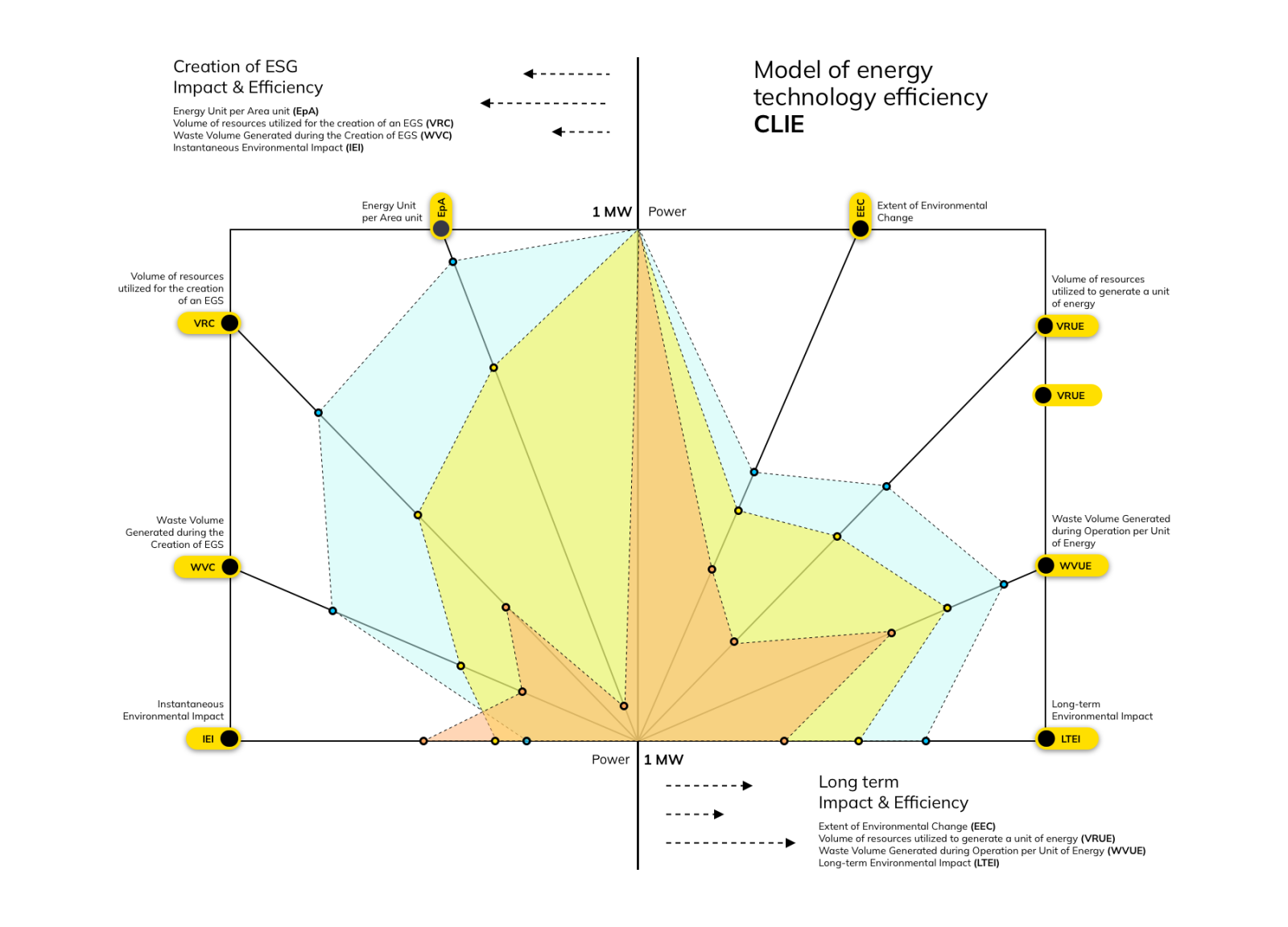Model CLIE: Creation and Life Cycle Impact & Efficiency
(Part 9 of article series: Energy and Technological Progress: Bridging the Gap.)
In previous articles, we have defined parameters to evaluate the effectiveness of specific technologies, considering both the consumption of the planet’s resources and the waste generated. The efficiency of these technologies can be analyzed using the CLIE (Creation and Life Cycle Impact and Efficiency) model, illustrated in the graph below:
Pic 1. CLIE (Creation and Life Cycle Impact and Efficiency) model. © Nazir Magsi
The CLIE model distinguishes between two key areas:
These areas together provide a comprehensive view of the technology’s overall effectiveness.
Also It is crucial to differentiate between the perception of efficiency per unit of power and energy production. This distinction is illustrated in the following graph, which can be used to model changes in efficiency over time, taking into account the technology’s life cycle.
Area 1: Efficiency and Impact in EGS Creation
The first area evaluates the efficiency and impact during the creation of an EGS:
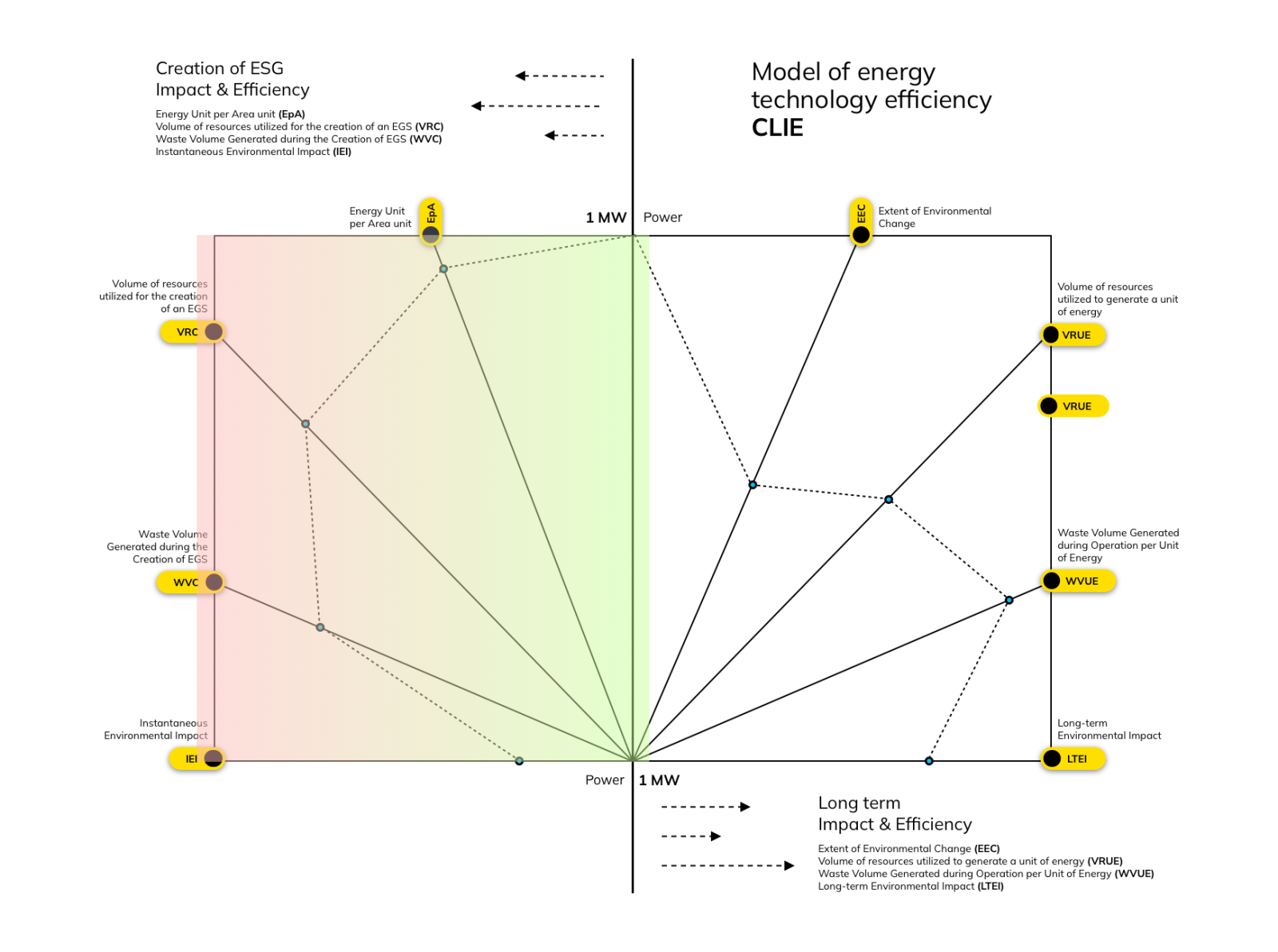 Pic 2. Area 1: Efficiency and Impact in EGS Creation. © Nazir Magsi
Pic 2. Area 1: Efficiency and Impact in EGS Creation. © Nazir Magsi
During the creation phase, we analyze the extent of resource expenditure, the environmental impact, and waste generation. It is crucial to understand the resource investment and impact at this initial stage, as it sets the foundation for the technology’s overall efficiency.
The more planes a technology occupies in this area, the less efficient it is per megawatt (MW) of EGS capacity.
Area 2: Long-term Impact and Efficiency
The second area assesses the long-term impact and efficiency of technologies:
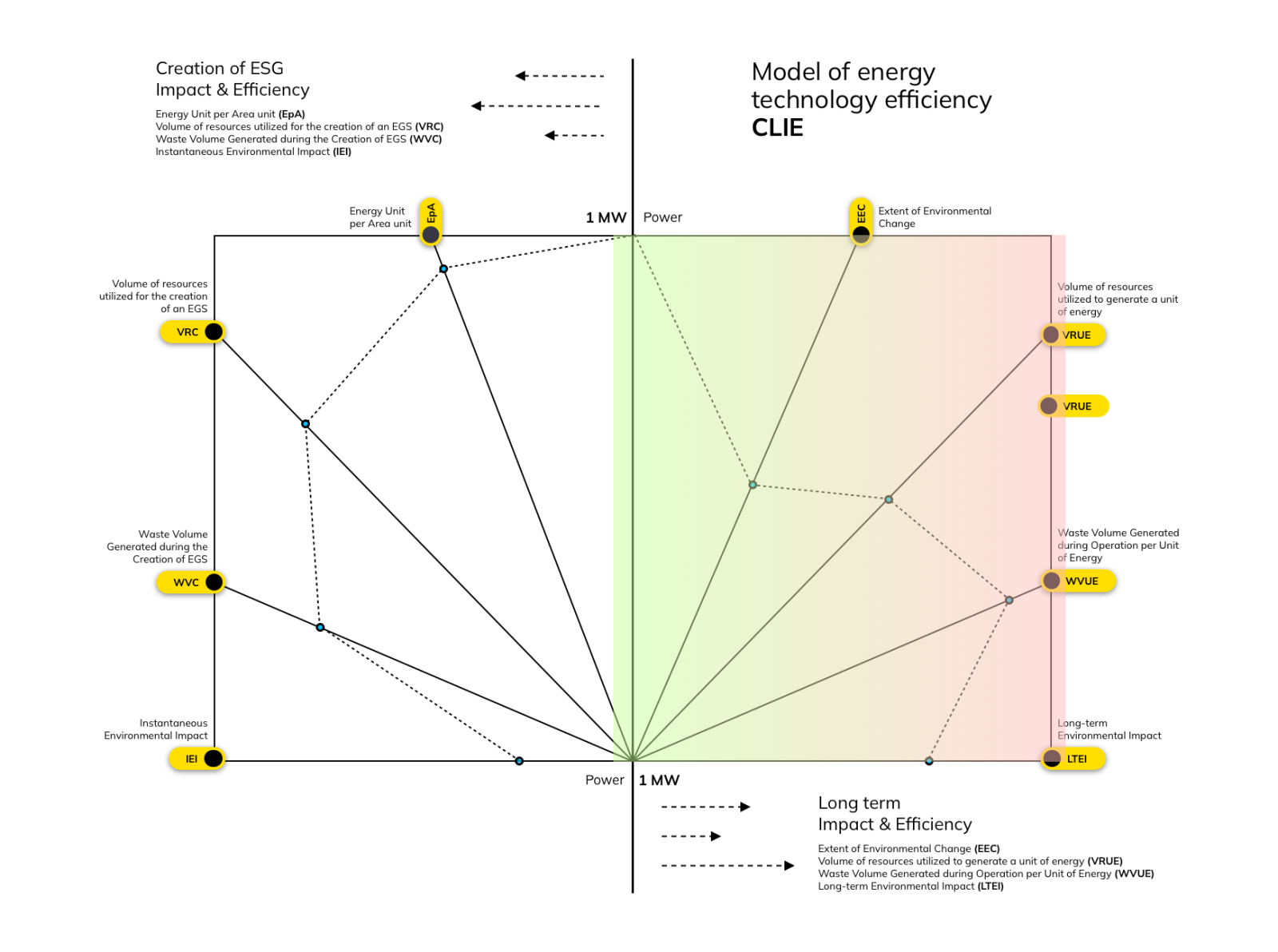 Pic 3. Area 2: Long-term Impact and Efficiency. © Nazir Magsi
Pic 3. Area 2: Long-term Impact and Efficiency. © Nazir Magsi
In the long term, we measure and evaluate:
- Resource consumption efficiency during energy generation.
- Environmental impact and changes due to EGS operation.
- Waste generation volume, including the degree and efficiency of waste processing.
The more surface area a technology occupies in this area, the less efficient it is per MW of generated energy.
Individual Parameters and Efficiency
Each parameter has its own plane and efficiency, which includes:
EpA: Efficiency per Area
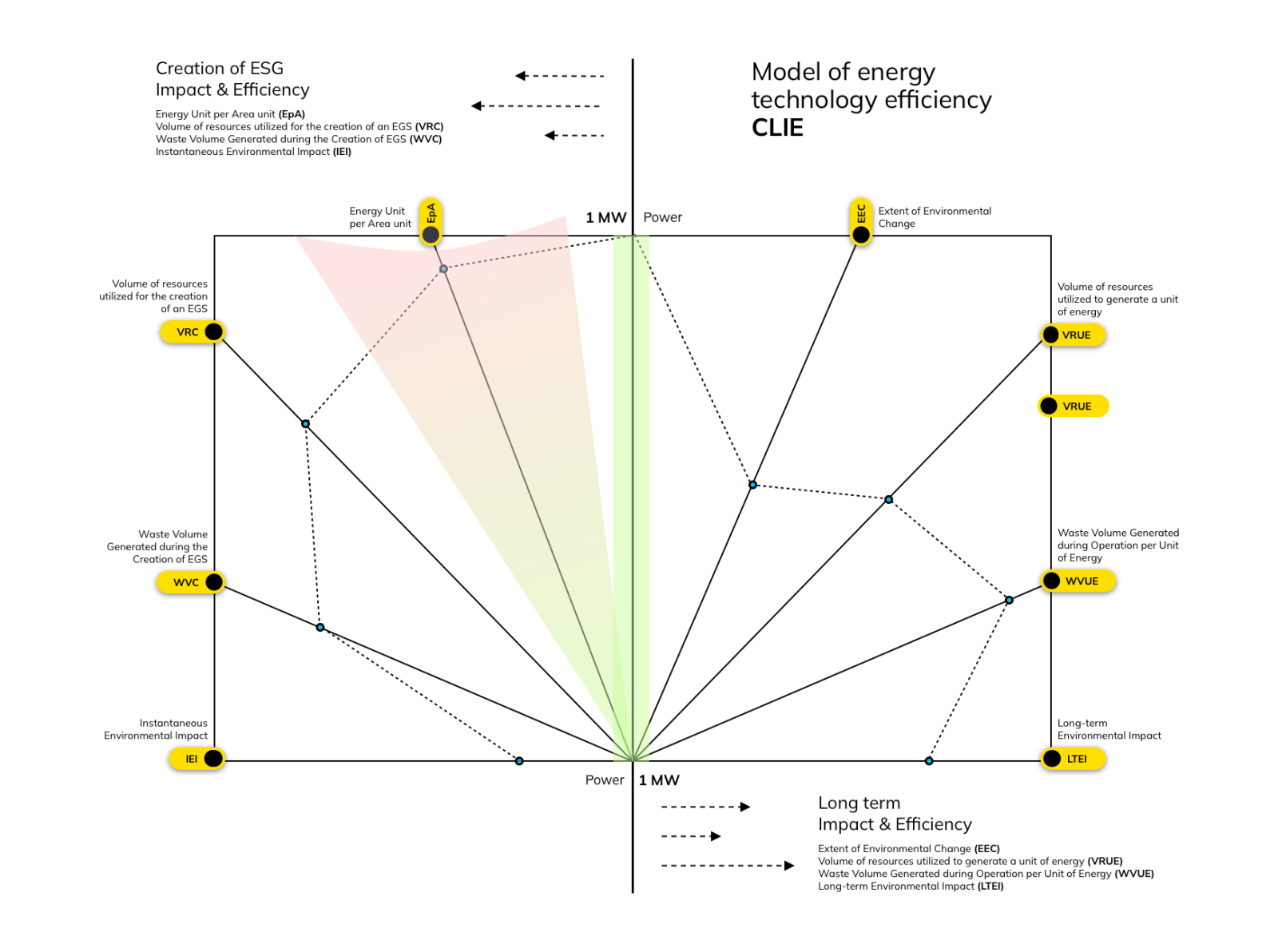 Pic 4. EpA: Efficiency per Area. © Nazir Magsi
Pic 4. EpA: Efficiency per Area. © Nazir Magsi
EEC: Energy Efficiency Coefficient
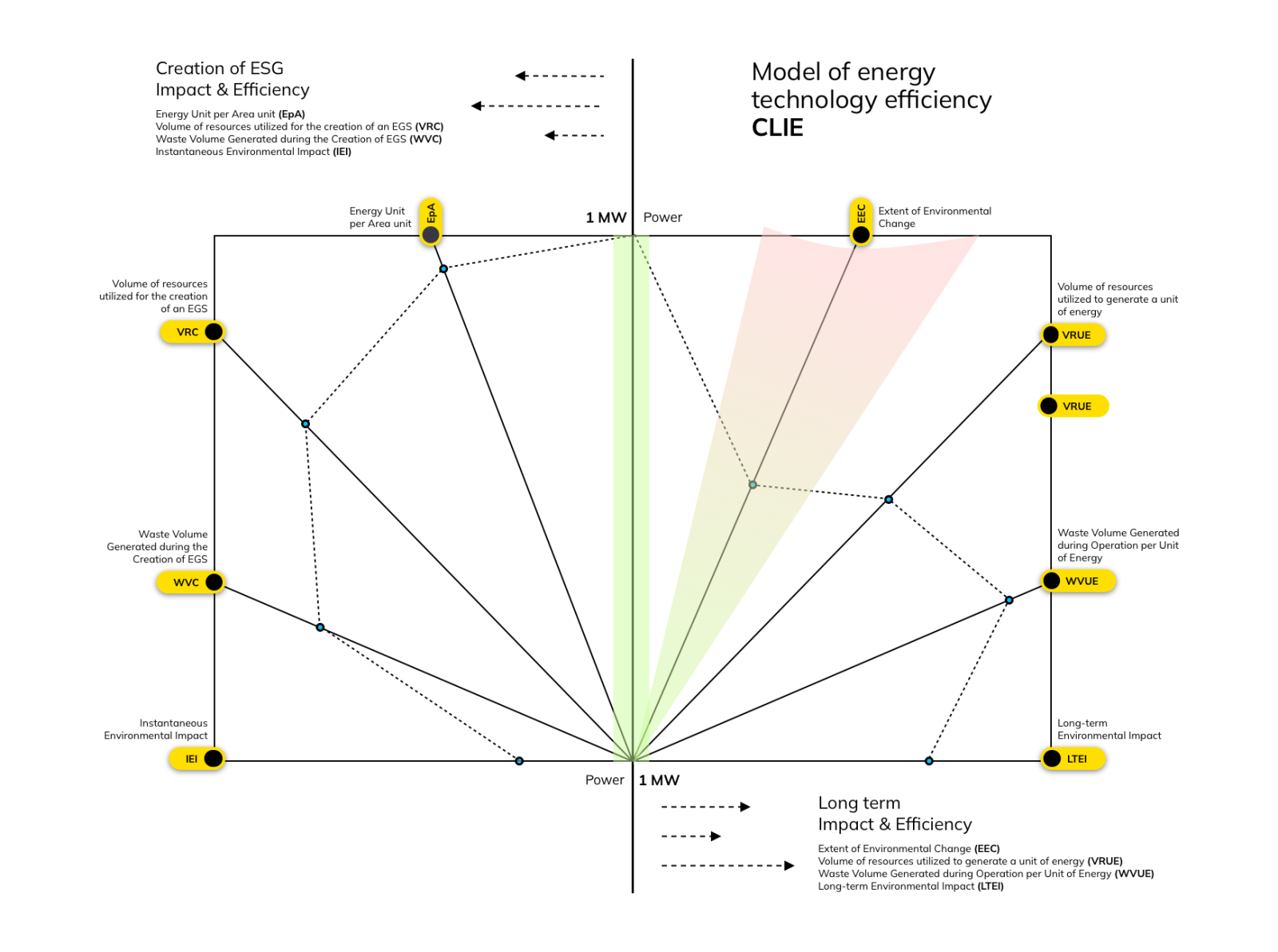 Pic 5. EEC: Energy Efficiency Coefficient. © Nazir Magsi
Pic 5. EEC: Energy Efficiency Coefficient. © Nazir Magsi
VRC: Volume Resource Consumption
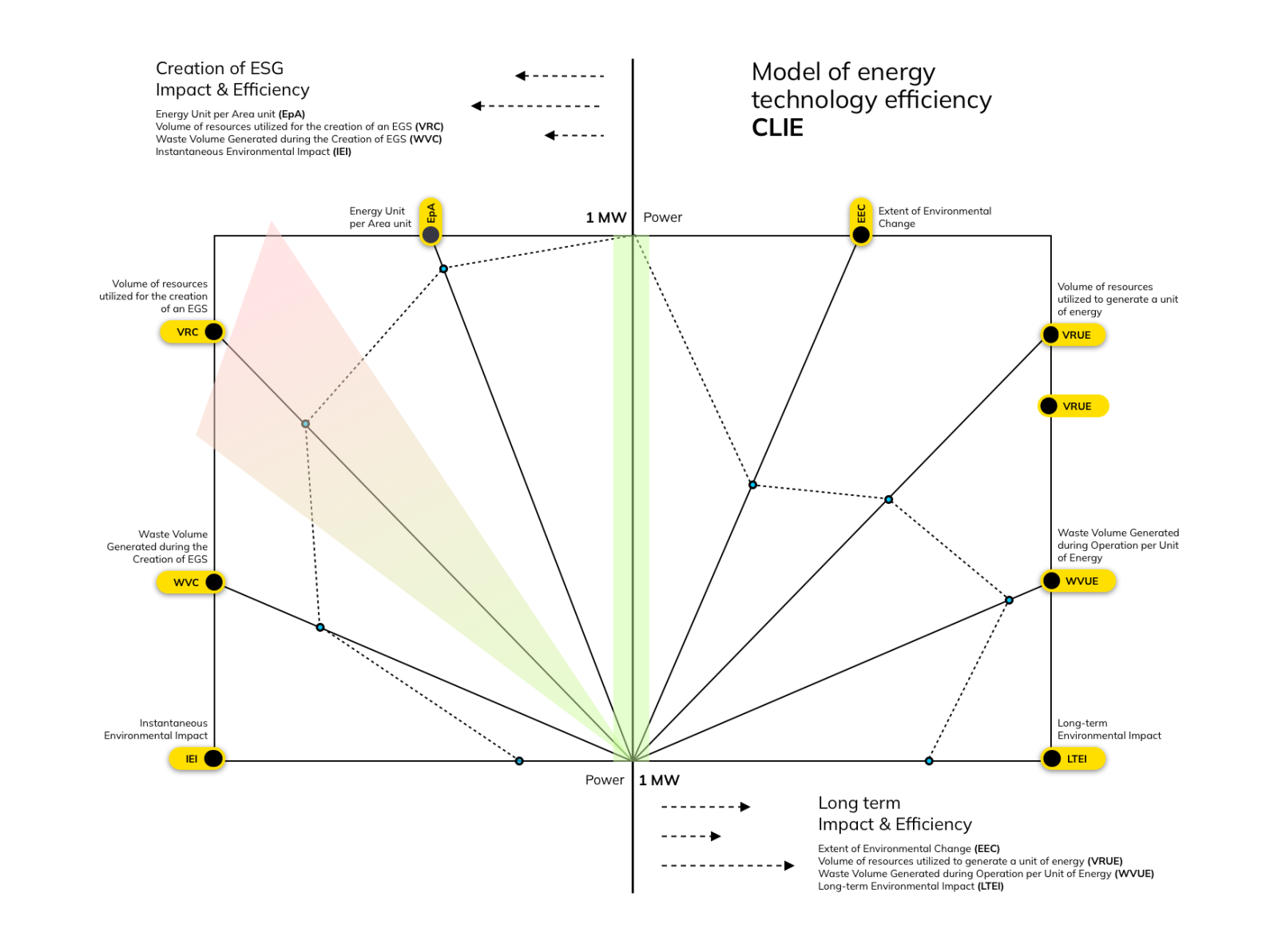 Pic 6. VRC: Volume Resource Consumption. © Nazir Magsi
Pic 6. VRC: Volume Resource Consumption. © Nazir Magsi
VRUE: Volume Resource Utilization Efficiency
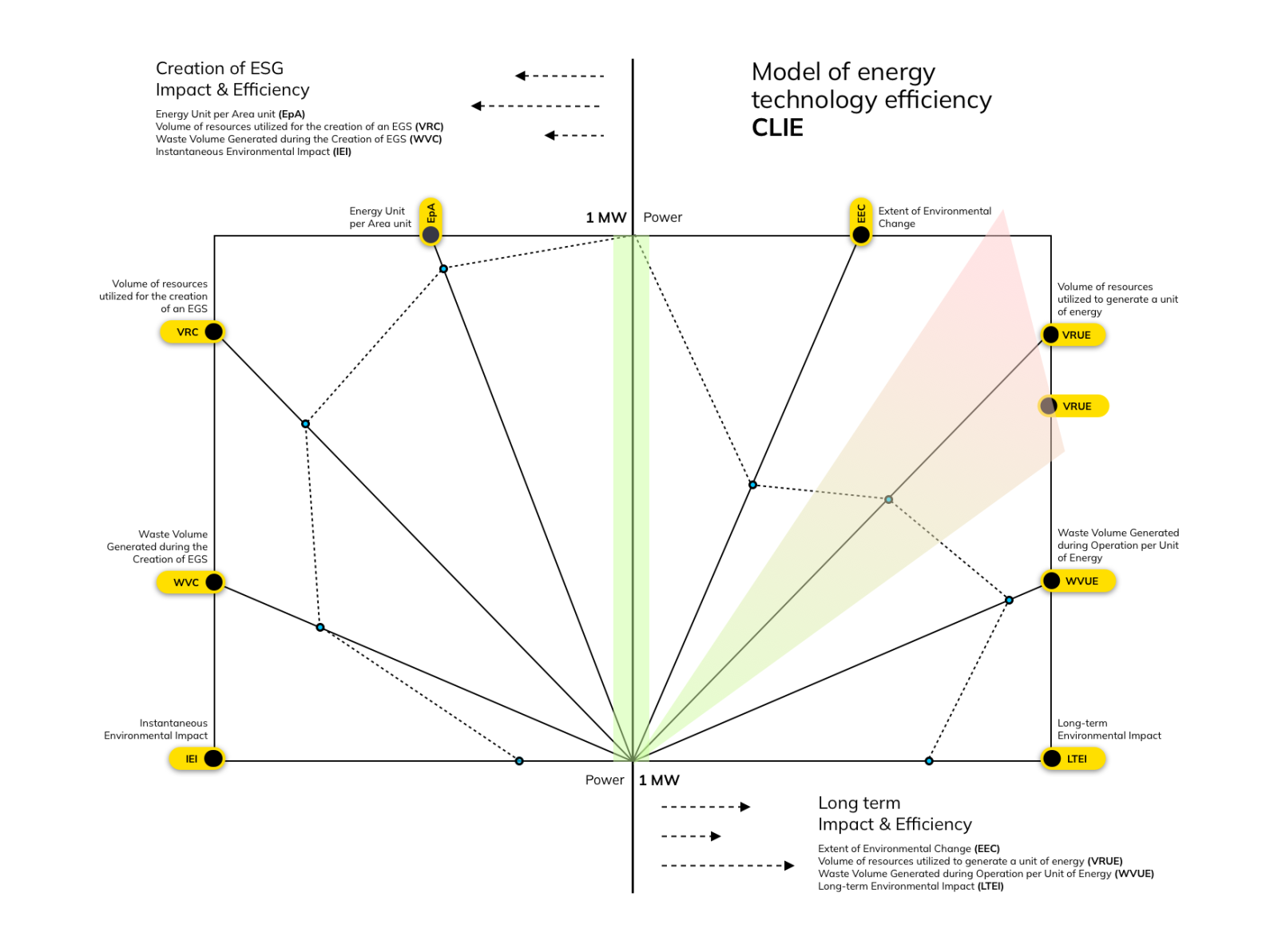 Pic 7. VRUE: Volume Resource Utilization Efficiency. © Nazir Magsi
Pic 7. VRUE: Volume Resource Utilization Efficiency. © Nazir Magsi
WVC: Waste Volume Coefficient
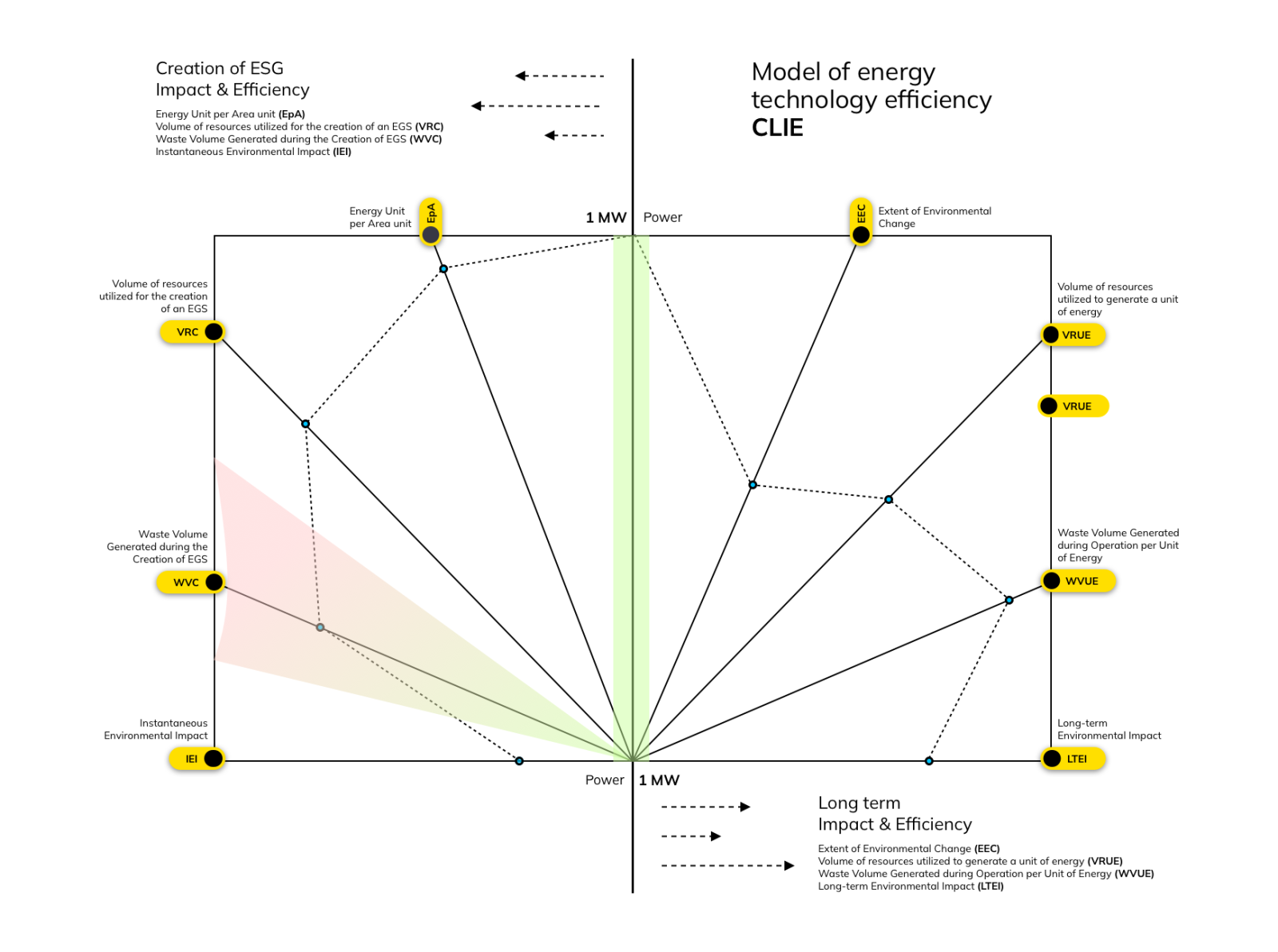 Pic 8. WVC: Waste Volume Coefficient. © Nazir Magsi
Pic 8. WVC: Waste Volume Coefficient. © Nazir Magsi
WVUE: Waste Volume Utilization Efficiency
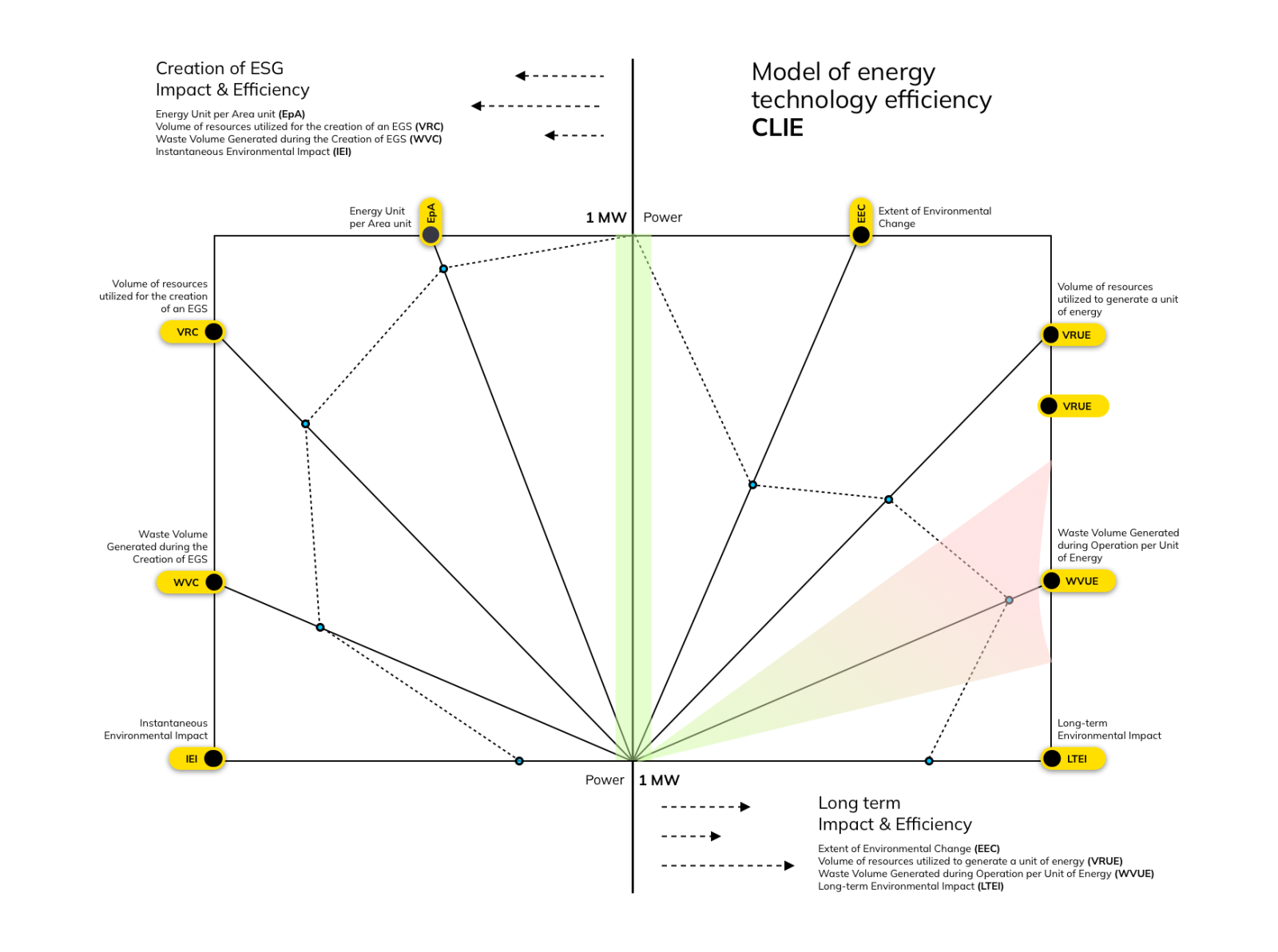 Pic 9. WVUE: Waste Volume Utilization Efficiency. © Nazir Magsi
Pic 9. WVUE: Waste Volume Utilization Efficiency. © Nazir Magsi
IEI: Initial Environmental Impact
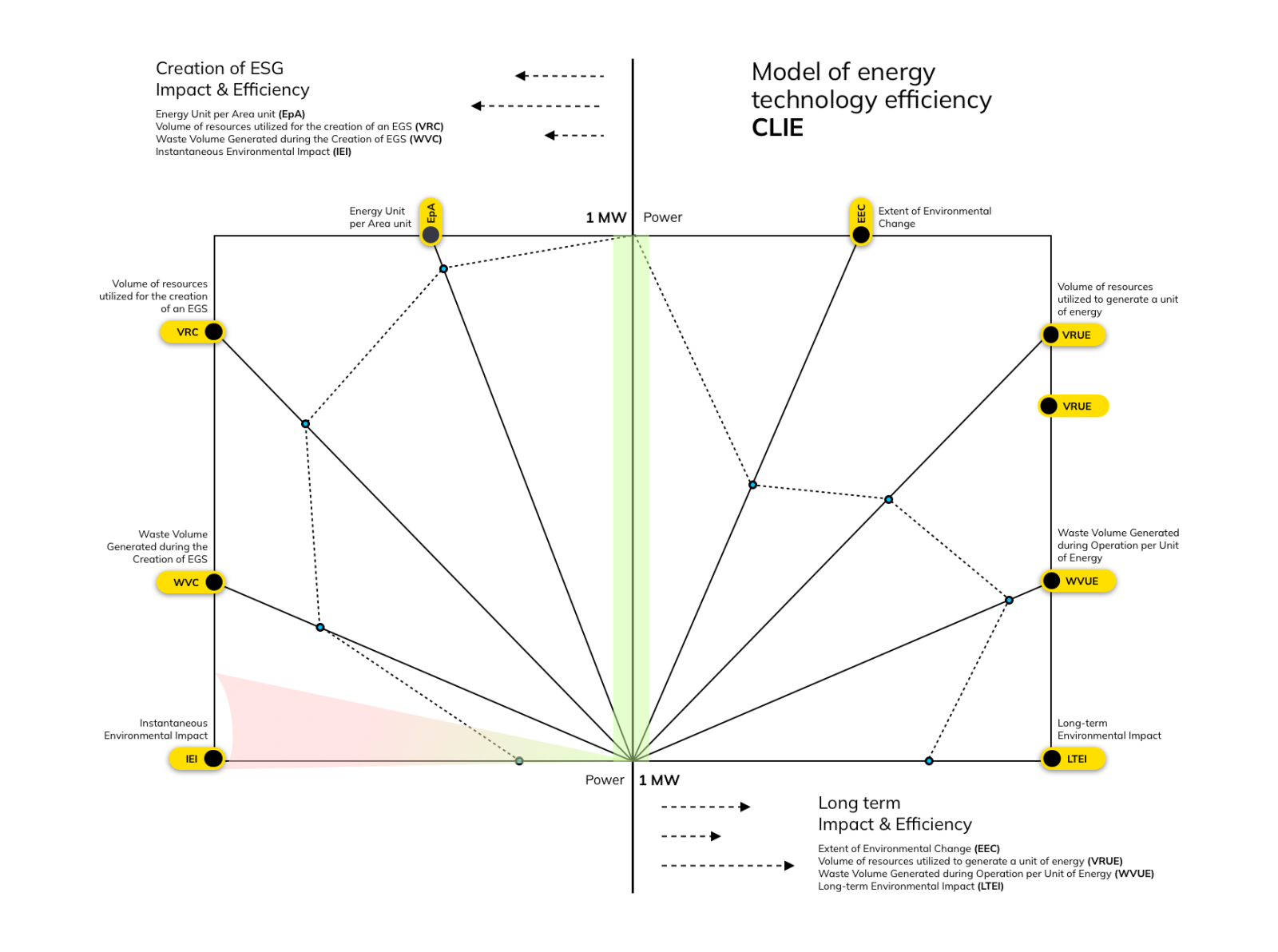 Pic 10. IEI: Initial Environmental Impact. © Nazir Magsi
Pic 10. IEI: Initial Environmental Impact. © Nazir Magsi
LTEI: Long-Term Environmental Impact
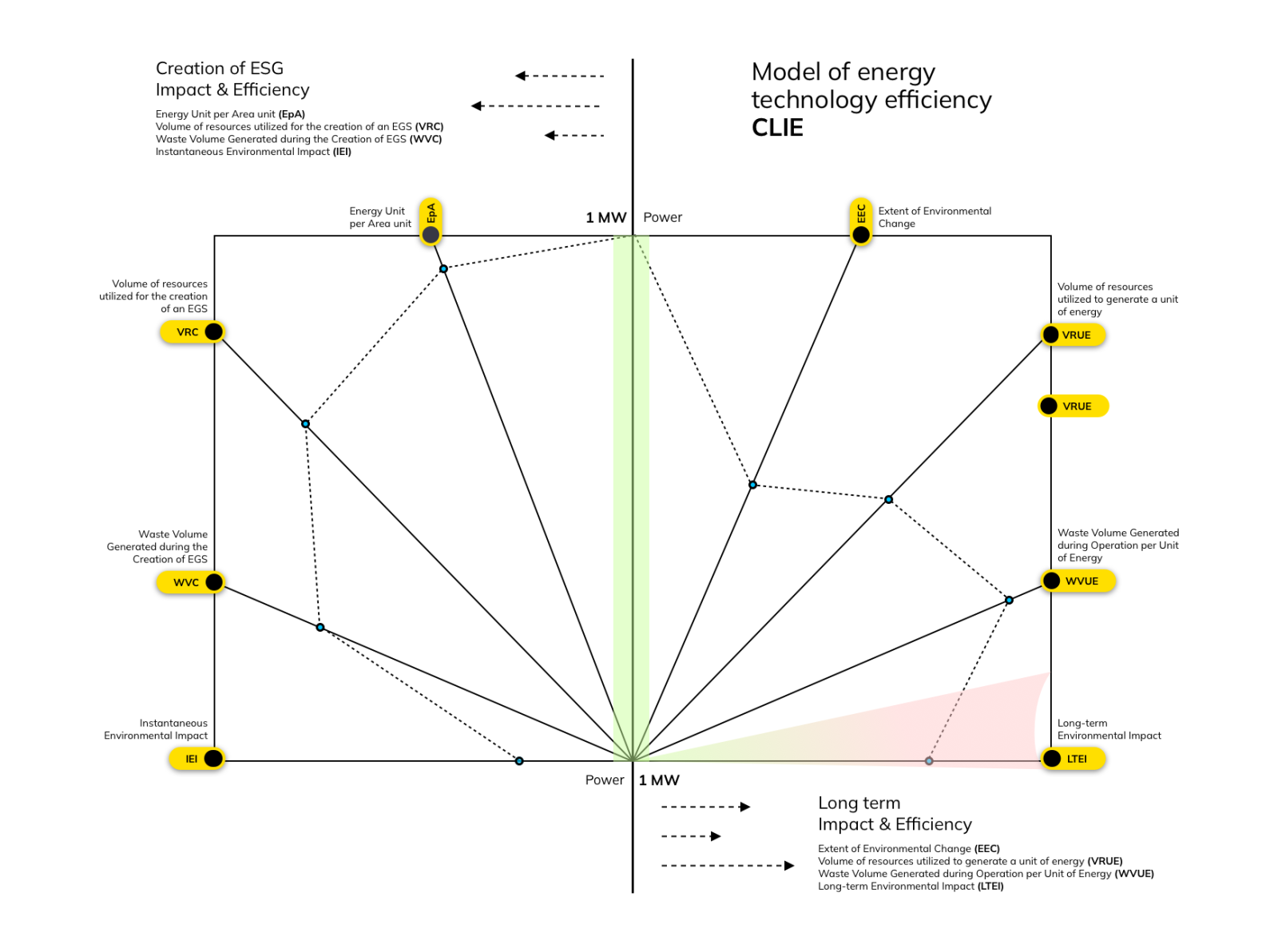 Pic 11. LTEI: Long-Term Environmental Impact. © Nazir Magsi
Pic 11. LTEI: Long-Term Environmental Impact. © Nazir Magsi
Comprehensive Analysis Tool
The CLIE model offers a comprehensive tool for analyzing the effectiveness of both existing and future technologies. It highlights weak points that need addressing and allows for simulations of efficiency changes when improvements are made in specific areas of the technology. This holistic approach ensures that technologies can be optimized not only for current performance but also for sustainable future development.
One of the primary weak points identified by the CLIE model is the often-overlooked energy inefficiencies in technology deployment. Additionally, the CLIE model can reveal gaps in resource management. This insight is crucial for designing technologies that minimize waste and maximize resource efficiency, contributing to a more sustainable and environmentally friendly technological landscape.
Furthermore, the CLIE model could be optimized by incorporating predictive analytics and scenario planning for the analysis of the sustainable development of future technology.
This enhancement would enable the model to not only assess current technological capabilities but also forecast future performance under various environmental and economic conditions. By anticipating potential challenges and opportunities, stakeholders can make informed decisions that promote resilience and adaptability.
Forward-thinking approach is essential for fostering innovation that aligns with long-term sustainability goals, supporting the transition to a more sustainable economy of energy.


